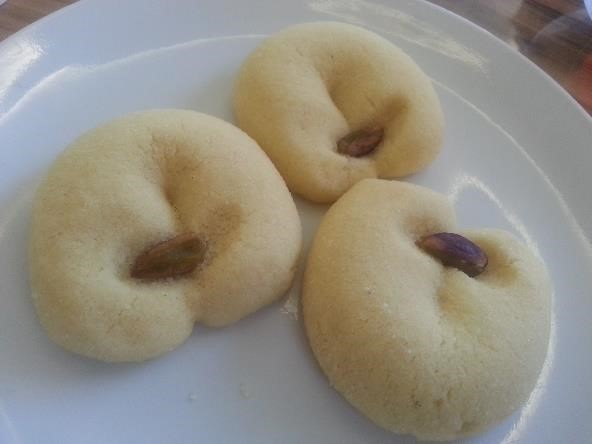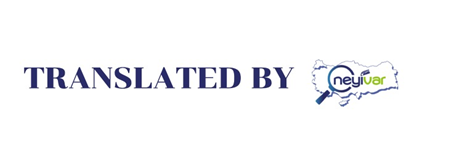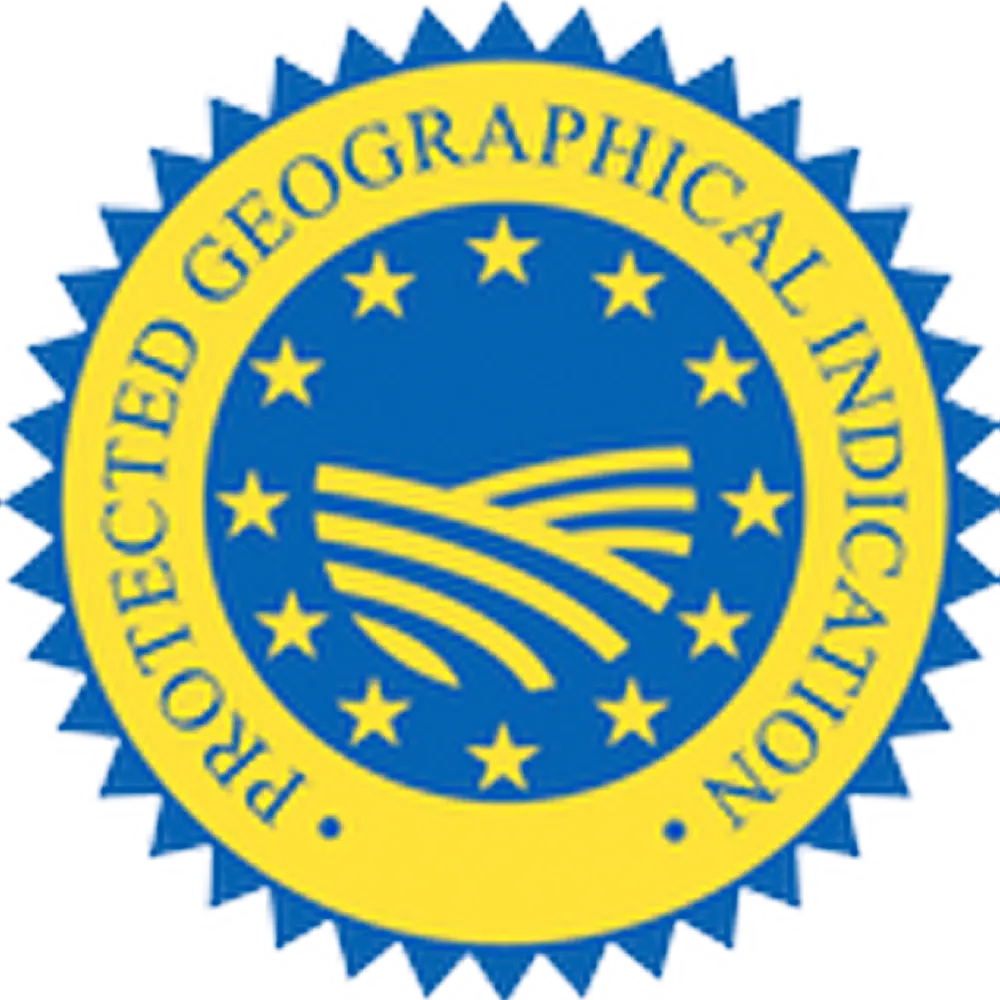Antep Cookie Protected Geographical Indication
Tuesday, July 5, 2022
No: 433 – Protected Geographical Indication (PGI)
ANTEP COOKIE
Registrant
GAZİANTEP COMMODITY EXCHANGE
This geographical indication was registered on 18.06.2019 to be protected as of 12.02.2018 within the scope of Industrial Property Law No. 6769.
Registration Number : 433
Registration Date : 18.06.2019
Application Number : C2018/049
Application Date : 12.02.2018
Name of Geograpical Indication : Antep Cookie
Product / Product Group : Cookie / Bakery and pastry products, pastries, sweets
Type of Geographical Indication : Protected Geographical Indication (PGI)
Registrant : Gaziantep Commodity Exchange
Address of Registrant : Sanayi Mah. 60092 Sok. Bina No: 15 27170 Şehitkâmil GAZİANTEP
Geographical Border : Gaziantep province
Usage Format : Can be used with brand element.
Product Description and Distinguishing Features:
Antep Cookie is made by using semolina, geographical indication registered Şanlıurfa Ghee (Urfa Butter), Boziç pistachio which is obtained by early harvesting of geographical indication registered Antep Pistachio, white sugar and flour, and baked in stone ovens in traditional production. The plain ones are in the shape of a crescent, and the ones with Antep Pistachio are flat and short. Antep Cookie, which preserves its freshness and taste without spoiling for 1 month in cool and dry places, is always made during the holidays in Gaziantep. Thus, plain Antep Cookie is also known as "holiday cookie" in Gaziantep.
The distinctive feature of Antep Cookie is the use of Urfa Ghee and the early harvested light colored, tender and bright green colored Antep Pistachio, which is known as "boziç" within the region. Boziç is the product obtained by separating and picking the geographical indication registered Antep Pistachios harvested in Antep between the end of July and 15th of August. This product is primarily preferred for making baklava and cookies with its unique aroma and dark green color.
Ingredients used in Antep Cookies and their characteristics:
- Urfa Ghee: Registered with the number 363 Şanlıurfa Ghee (Urfa Butter), geographically marked butter is used. Using Urfa Ghee as butter in Antep Cookie makes the cookie soft and bright colored inside, and leaves a pleasant taste and aroma in the mouth.
- Antep Pistachio: The product used is called boziç, which is obtained from Antep Pistachio registered with the number 27. This product is preferred for the cookies because of its aroma and dark green color. While it is placed on the cookie as a whole in plain cookies, it is grated in the range of 0.7-1.4 mm in pistachio cookies and added into the cookie dough.
- Semolina: The type of semolina used in Antep Cookies is traditionally obtained from hard wheat grown in Gaziantep, in this type of semolina; the amount of moisture is maximum 14.5%, the amount of protein is at least 10.5% in dry matter, the amount of ash is maximum 1% in dry matter, acidity is maximum 0.05%. In the production of Antep Cookies, two types of wheat semolina are used according to the product feature and shape. While coarse semolina is used in Pistachio Antep Cookies, fine/medium sized semolina is used in plain Antep Cookies.
- Flour: Flour made from hard wheat grown in Gaziantep.
- Sugar: White sugar is used, which refers to purified and crystallized sucrose with a polarization of at least 99.7° Z.
Production Method:
Semolina, Şanlıurfa Ghee, sugar and flour are used in the same proportions given in Table-1 in pistachio and plain Antep Cookies. However, in plain cookies, 1 or 2 whole boziç pieces are placed on the shaped cookie dough, while 20-40% grated bozic is added to the dough in pistachio cookies.
Table-1: Amount of ingredients in Pistachio Cookies
|
| Quantity | |
Semolina |
| 30% of the total dough amount by mass | |
Şanlıurfa Ghee |
| 30% of the total dough amount by mass | |
Sugar |
| 25% of the total dough amount by mass | |
Flour |
| 15% of the total dough amount by mass | |
Antep Cookie is produced by the following methods, depending on whether it is with pistachio or plain.
- The Making of Plain Antep Cookies: If a mixer is to be used, a mixer of suitable size for the amount of Antep Cookies to be made is selected. In a deep bowl or in a mixer, Şanlıurfa Ghee and sugar are whipped until they turn white. Then, semolina and flour are mixed in a separate bowl, and the mixing process is continued until a homogeneous mixture is obtained by slowly adding to the first mixture. The mixing process is completed in approximately 10-15 minutes. If it is to be made in small quantities, it can be mixed manually for 15 minutes. After a homogeneous mixture is obtained, the dough is placed on marble counters in large pieces and divided into walnut-sized pieces. The pieces are shaped in a slightly rounded shape by hand, thinned. It is rounded to a width of 2.5-3 cm and given a crescent shape, the ends are joined. 1 or 2 whole boziç pieces are placed at the junction of the ends of the crescent-shaped cookie dough. Pistachio Cookies in their final shape are arranged on trays so that they do not touch each other. Baking paper can be placed between the tray and the cookies to prevent sticking. Antep Cookies are baked in the oven at 220°C for 15-20 minutes. Antep Cookies are baked in stone ovens in businesses where traditional methods are used. Removed from the oven, Antep Cookies are let sit for half an hour to cool. Removed from trays after cooling. Since it is fragile, it is recommended to pack them side by side.

Figure-1: Plain Antep Cookie
- The Making of Antep Pistachio Cookies: The Making of Plain Antep Cookies: If a mixer is to be used, a mixer of suitable size for the amount of Antep Cookies to be made is selected. In a deep bowl or in a mixer, Şanlıurfa Ghee and sugar are whipped until they turn white. Then, semolina and flour are mixed in a separate bowl, and the mixing process is continued until a homogeneous mixture is obtained by slowly adding to the first mixture. Finally, finely ground Antep Pistachio is added in accordance with the ratios in Table-1. The mixing process is completed in approximately 10-15 minutes. If it is to be made in small quantities, it can be mixed manually for 15 minutes. After a homogeneous mixture is obtained, the dough is placed on marble counters in large pieces and rolled. The dough in large rolls is cut into pieces 18-20 cm wide with a knife. Each piece is elongated by rolling one by one on the marble counter. The diameter of the thinned dough is approximately 2.5 cm. The dough is cut crosswise with knives and divided into 4.5-5 cm long pieces. Before each piece of dough is placed on the tray, it is rounded transversely and its shape is made smooth. Antep Pistachio Cookies, which have taken their final shape, are arranged on trays so that they do not touch each other. Baking paper can be placed between the tray and the cookies to prevent sticking Antep Cookies are baked in the oven at 220°C for 15-20 minutes. Antep Cookies are baked in stone ovens in businesses where traditional methods are used. Removed from the oven, Antep Cookies are let sit for half an hour to cool. Removed from trays after cooling. Since it is fragile, it is recommended to pack them side by side.

Figure-2: Pistachio Antep Cookie
The stages of production in accordance to its technique and hygienic measures, preparation, processing, preservation, storage, transportation and marketing of Antep Cookies are carried out in accordance with the food legislation.
Production, Processing and Other Operations to be Performed within the Geographical Boundary:
Antep Cookie has become famous within the region since ancient times, for being a holiday dessert, and because of its unique production method and the use of local flour and semolina, and boziç pistachio, which is the early harvest of Antep Pistachio with geographical indication registered. Thus, all stages of the production of Antep Cookies should take place in Gaziantep.
Inspection:
Inspections of Antep Cookies are carried out annually, under the coordination of Gaziantep Commodity Exchange, by the supervisory authority consisting of at least 3 representatives representing Gaziantep Provincial Directorate of Agriculture and Forestry, Gaziantep Gastronomy and Tourism Association, Gaziantep University Fine Arts Faculty Gastronomy and Culinary Arts Department and The Chamber of Gaziantep Restaurants Kebab Shops Pastry Shops Dessert Shops and Baklava Shops. It will be carried out once a year and whenever necessary or upon complaint.
Audit reports are sent annually to the Turkish Patent and Trademark Office by Gaziantep Commodity Exchange. Audits will be made for the production, marketing and sales stages. The supervisory authority will especially inspect the following issues during the production and marketing of Antep Cookies:
- Whether Pistachio Cookies are produced within the borders of Gaziantep (will be checked from the receipt documents)
- Whether the type of cookies are plain or pistachio
- Ratios of production inputs
- Using Şanlıurfa Ghee (Ghee) registered with geographical indication
- The size of the semolina used and if it was obtained from hard wheat produced in Gaziantep (will be checked from the receipt documents)
- If the flour used is obtained from hard wheat produced in Gaziantep (will be checked on the receipt documents)
- The accuracy of the usage ratio of Boziç pistachio obtained from Antep Pistachio with geographical indication registered
The supervisory authority may benefit from or purchase services of public or private institutions, or natural or private entities in charge, during the execution of the inspection. The registrant carries out the legal processes for the protection of rights.

Original text from ci.gov.tr.












